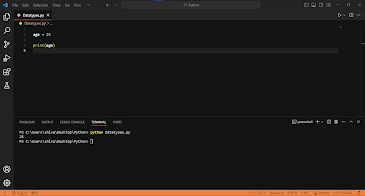Type Conversion and Type Casting in Python
Type Conversion and Type Casting Type Conversion and Type Casting in Python refer to the process of changing the data type of a variable or value from one data type to another. Python provides several built-in functions for type conversion and casting. Here are some of the most commonly used methods: int() float() str() bool() 1. Implicit Type Conversion (Coercion): Python performs automatic type conversion when an operation involves operands of different data types. For example, when you add an integer and a floating-point number, Python will automatically convert the integer to a float to perform the addition. This is called implicit type conversion, and it happens automatically. int_num = 5 float_num = 2.5 result = int_num + float_num # Automatic conversion of int to float 2. Explicit Type Conversion (Type Casting): You can explicitly convert one data type to another using functions lik...




